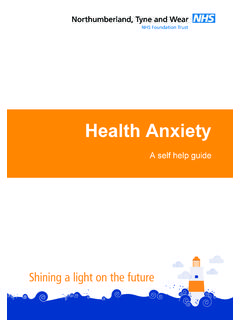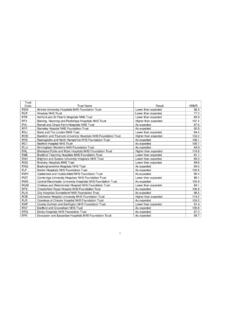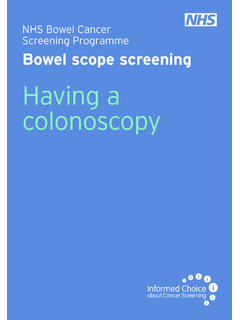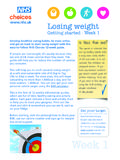Transcription of Transforming urgent and emergency care services in …
1 Transforming urgent and emergency care services in england urgent and emergency care Review End of Phase 1 Report Appendix 1 Revised Evidence Base from the urgent and emergency care Review High quality care for all, now and for future generations 1. NHS england INFORMATION READER BOX. Directorate Medical Operations Patients and Information Nursing Policy Commissioning Development Finance Human Resources Publications Gateway Reference: 00692. Document Purpose --- High quality care for all, now and for future generations: Transforming urgent and emergency care services in england - urgent and Document Name emergency care Review End of Phase 1 Report, Appendix 1 Revised Evidence Base from the urgent and emergency care Review Author NHS england Publication Date 13 November 2013.
2 Target Audience CCG Clinical Leaders, CCG Chief Officers, CSO Managing Directors, care Trust CEs, Foundation Trust CEs , Medical Directors, Directors of PH, Directors of Nursing, Local Authority CEs, Directors of Adult SSs, NHS england Regional Directors, NHS england Area Directors, NHS. Trust Board Chairs, Special HA CEs, Directors of HR, Directors of Finance, Allied Health Professionals, GPs, Communications Leads, emergency care Leads, Directors of Children's services , NHS Trust CEs, All NHS england Employees, Patients and the Public Additional Circulation #VALUE! List Description This document describes the outcomes of the NHS england urgent and emergency care Review's engagement exercise.
3 Cross Reference End of Phase 1 report and appendices 1-3. Gateway Reference 00691-00694. Superseded Docs 0. (if applicable). Action Required For review Timing / Deadlines N/A. (if applicable). Contact Details for urgent and emergency care Review Team further information NHS england Quarry House (Rm 5W52). Leeds LS2 7UE. 0. 0. Document Status This is a controlled document. Whilst this document may be printed, the electronic version posted on the intranet is the controlled copy. Any printed copies of this document are not controlled. As a controlled document, this document should not be saved onto local or network drives but should always be accessed from the intranet 2.
4 Transforming urgent and emergency care services in england urgent and emergency care Review End of Phase 1 Report Appendix 1 Revised Evidence Base from the urgent and emergency care Review High quality care for all, now and for future generations First published: June 2013. Revised publication: November 2013. Prepared by: urgent and emergency care Review Team 3. Contents Executive summary .. 6. Key messages 6. 1. Introduction .. 10. 2. The urgent and emergency care Review .. 13. Who is involved in the programme? 13. Approach 13. 3. Current provision of urgent and emergency care services .. 14. Increasing demand and costs of urgent and emergency care 14.
5 4. Patient experience .. 20. Patient experience of general practice 20. Patient experience of telephone services 22. Fragmentation of urgent care services 23. Monitoring patient experience 24. Patient experience of 999' emergency services 24. Patient satisfaction in A&E departments 25. Meeting patients' expectations in hospital 27. 5. Self- care and self-management .. 28. The impact of self- care and self-management 28. Supporting self-management of long-term conditions in primary care 30. Online health tools and telecare 31. Community Pharmacy 32. 6. Telephone care .. 34. NHS Direct and NHS 111 34. GP telephone consultations 35.
6 7. Face-to-face care .. 36. Access to primary care 36. General practice out-of-hours services 39. Home visits 40. urgent care walk-in services 42. Workforce capacity and skill mix 44. 8. 999 emergency services and accident and emergency departments .. 45. 999 emergency calls 45. 4. Pre-hospital emergency care 49. Accident and emergency departments 50. 9. Access to quality back up and support services .. 59. Back up services 59. Support from mental health liaison services 62. Support from general practice in A&E departments 63. 10. emergency admissions to hospital .. 64. Rising number of emergency admissions to hospital 64.
7 Outcomes for emergency admissions to hospital 67. Patient flow within the hospital 70. 11. urgent and emergency care workforce .. 71. General Practice Workforce 71. Workforce in A&E Departments 72. Developing the role of nurses 75. Developing the workforce of ambulance services 76. 12. Effective urgent and emergency care networks .. 77. 13. 80. Glossary .. 82. 5. Executive summary This evidence base was published for a period of wider engagement between 17 June and 11. August 2013 to facilitate further development of the document in public. During the engagement period a significant body of further evidence was received by the review team which where relevant, has been incorporated.
8 This evidence base sets out to review the urgent and emergency system in england and draw out evidence to illustrate the main challenges it currently faces. Starting with overall patient experience, this document goes on to highlight issues within each part of the urgent and emergency care system in order of the perceived levels of patient need that it addresses, these are: Self- care and self-management;. Telephone care ;. Face-to-face care ;. 999 emergency services ;. A&E departments; and emergency admissions to hospital. Two final sections follow, one examines the capacity and sustainability of the current workforce model, and the other outlines the potential of urgent and emergency care networks to create a whole-system approach capable of addressing many of the current issues.
9 A number of key messages emerge from each section of the evidence base. These are listed below. Key messages Current services The number of GP consultations has risen over recent years and, despite rapid expansion and usage of alternative urgent care services , attendances at A&E departments have not reduced. This indicates either unmet demand across the whole system or supply induced demand: increased uptake as a result of increased provision of services . Growth in the number of people using urgent and emergency care is leading to mounting costs and increased pressure on resources. Overall fragmentation of the system and inconsistent service provision means that patients may not be able to access the most appropriate urgent or emergency care service to suit their needs, leading to duplication and over-use of the most expensive services , at significant cost to the NHS.
10 Patient experience There is significant variation in patient experience between GP practices. Data shows that some patients who have a good experience of their GP are less likely to use A&E. departments. 6. Patient experience of both the NHS Direct telephone service and pilots of NHS 111 has been found positive; however transition from nurse-led triage to calls answered by trained advisors, supported by experienced clinicians, has led to some incidences of poor patient experience during the early implementation of NHS 111. The wide range of urgent care services available and lack of service standardisation and labelling results in patient confusion over how to access the right healthcare quickly; this leads to duplication, delay, increased clinical risk and poor patient experience.









